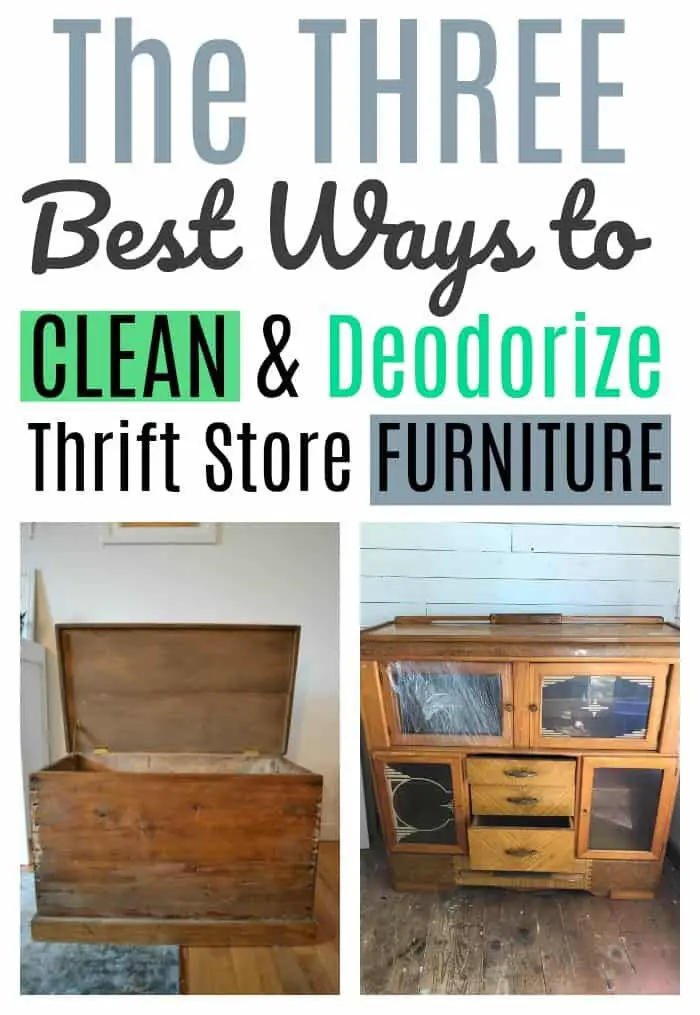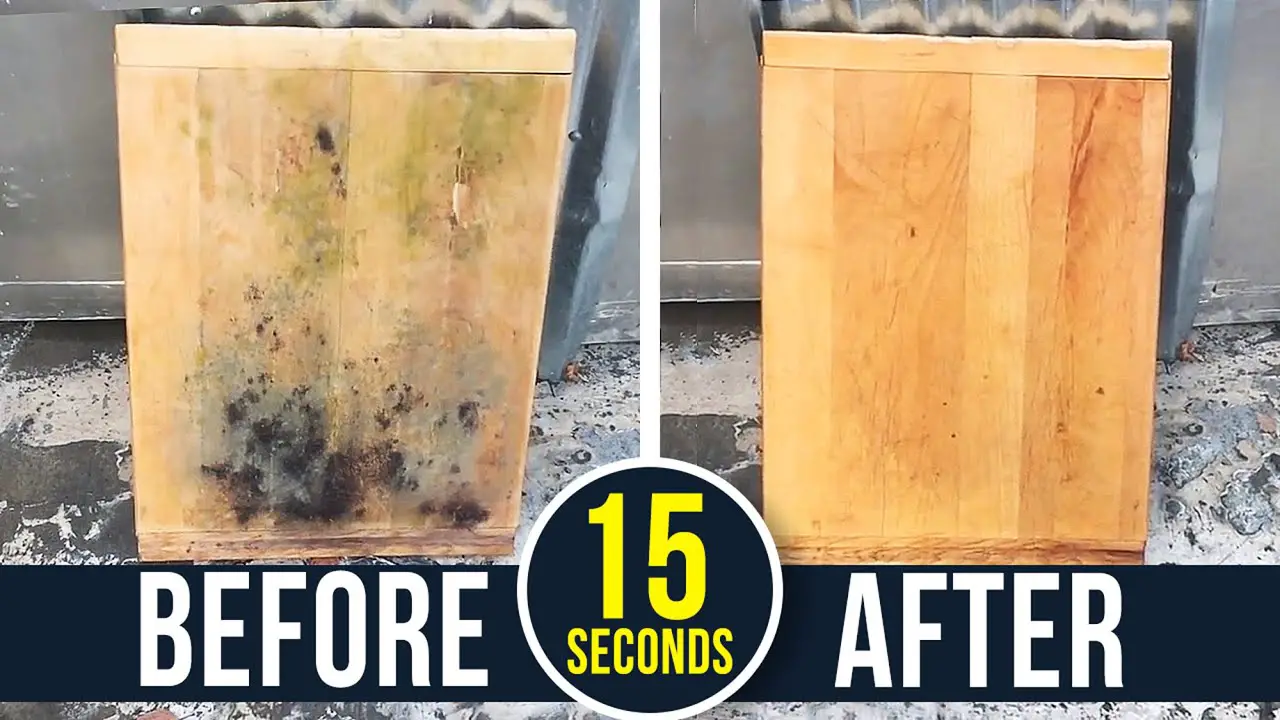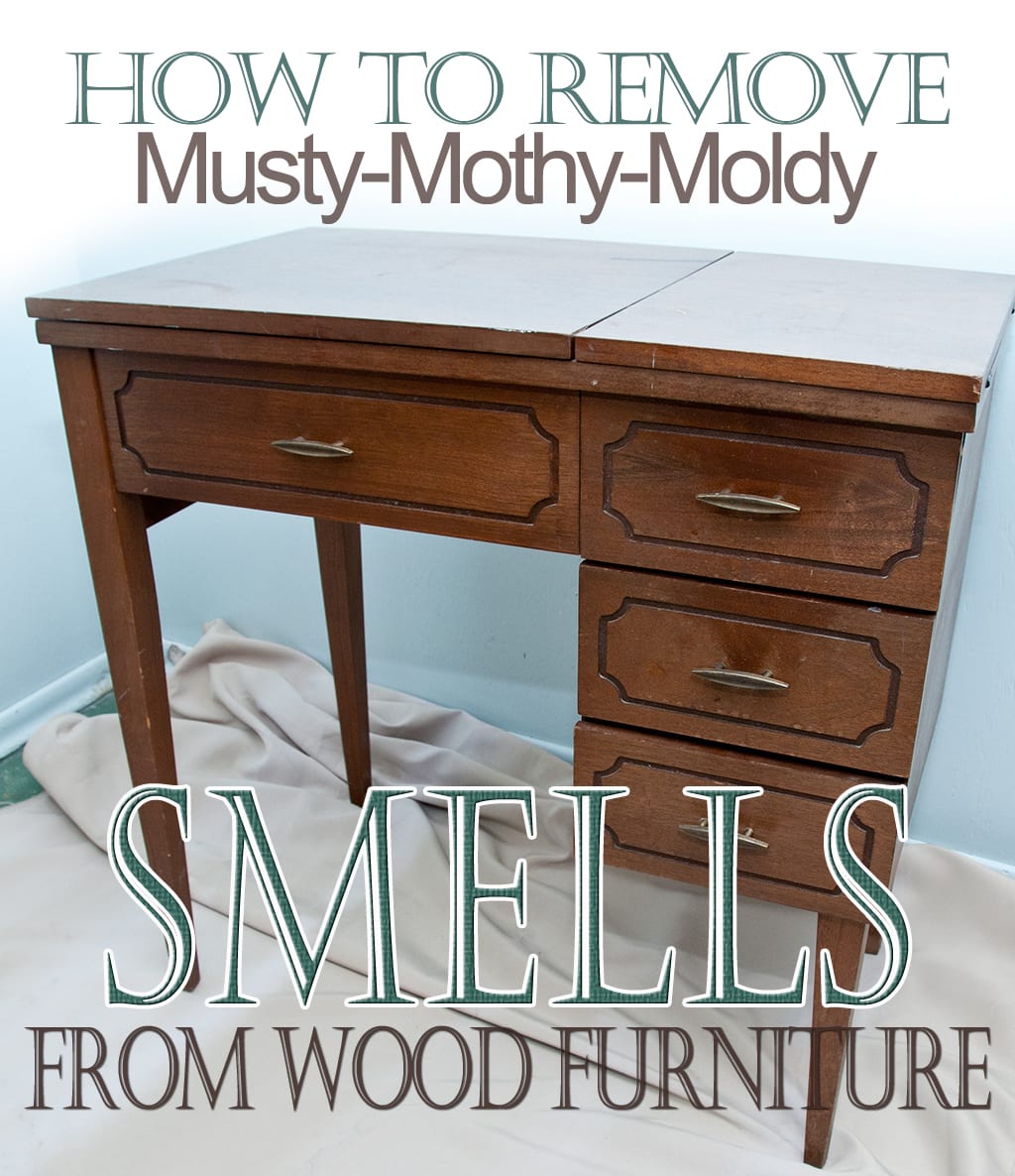What Causes Mold On Wood These 2 Things
Mold can be found growing on virtually any surface, that is, if it has a food source, enough moisture, and the ideal conditions
Cellulose-based materials like wood provide the perfect source of nutrients to promote mold growth.
How does this happen?
1. Moisture Content of Wood
First, lets look at the moisture content of wood. The Moisture Content of wood is the total amount of water present in the material.
In general, the moisture content of wood depending on the species generally falls between 8% to 19% by weight.
When a contractor uses wood to build your home, the ideal moisture content should be around 14%.
When the moisture content of wood gets to the 20% range and higher, significant mold growth will begin to occur in several days.
No matter where you are or where you live, youre exposed to mold spores.
When mold spores are floating around in the air land on a wet piece of wood, lumber or any material that it can break down and digest, guess what?
The spores will begin to germinate and grow on the surface of that material.
So, a piece of wood, furniture or other cellulose-based material that gets wet and is not dried within 24-48 hours provides the ideal habitat for mold to grow a rapid pace.
To illustrate this, take for example a recent natural disaster, Hurricane Michael, that occurred in Florida.
This storm caused storm surges which flooded many homes along the FL panhandle.
Mold can grow on wood because of:
2. High Humidity Levels
Apply The Cleaning Solution And Scrub
1 Apply the cleaning solution that you picked out.
Test the solution in a small, hidden area of the wooden furniture. Place the solution in a spray bottle and spray it on a clean rag, a soft brush or a scrubbing pad. For finished wood, do not use a brush unless you intend to refinish the surface after removing mold.
Spray the solution to the moldy area it should be enough to cover the mold. Too much solution can add to the dampness of the wood. Allow the solution to sit for a few minutes. Afterwards, scrub the area in a circular motion with the rag, soft brush or scrubbing pad.
2 Use a disposable towel you can disinfect with bleach later, wipe the area to remove the excess.
Repeat the steps until you have completely removed the mold from the surface of the mold
3 If the mold appears to be established deeper into the wood you need to lightly sand the area. Sand the area while it is still damp to prevent mold spores from spreading through the air.
4 After you have removed mold from wood, clean up the area.
Dispose of anything that has come in contact with the mold or cleans it with a proper detergent
5 Let the wood dry by keeping in a warm, dry area with good ventilation. Use a dehumidifier inside a room.
After the wood has dried, check for any signs of mold or if the piece still smells moldy. Repeat the process if you spot any mold left on the wood.
My Wardrobe Is Made Of Engineered Wood And It Has White Powdery Fungus No Matter How Much I Clean It Off It Keeps Coming Back Any Permanent Solution To This
The only permanent solution is to lower the relative humidity . A mold resistant coating will eventually fail, due to the accumulation of dust on top of the coating. Youll need to both monitor the RH and implement a solution decrease those levels.
Monitoring the RH, is relatively simple. Purchase an inexpensive RH gauge from your local hardware store or online. Place the device inside the wardrobe. Your goal is to keep it below 55%, and preferably, < 50%.
Lowering the humidity is a bit more tricky. If you live in a humid climate, youll need either a dehumidifier or air conditioning. If you already have AC, hire a local technician to evaluate the system to ensure it is operating properly. If its working correctly, it should dramatically lower the humidity in the home.
If you dont have air conditioning, a dehumidifier can help. However, they produce heat, which can be uncomfortable in a warm climate. If you live in a cool climate, the excess heat can help heat the room.
Don’t Miss: How To Kill Mold In My Basement
Cleaning Mildew Off Antique Furniture
Mildew will grow when your furniture is exposed to humidity, which can cause moisture build-up. Knowing how to clean mildew off antique wood furniture is essential to saving your antique furniture without destroying its face value. The first unofficial step to take is to gear up properly when dealing with a fungus by using gloves and a mask. Next, you can follow these steps to get rid of mild dew on your antique furniture.
Take The Furniture Outdoors For Cleaning

This is another step to help ensure your health and safety.
Mold spores spread during the cleaning process, and you do not want to further infect your home or other items of furniture.
What if I cant Move My Furniture Outside?
If you are unable to move your furniture outside, consider opening your windows for improved airflow while cleaning.
Additionally, cover any other furniture, flooring, or walls surrounding the wooden furniture.
Another option is taking apart the piece of furniture and cleaning the pieces separately outside.
While transporting your furniture, consider covering it with garbage bags to further prevent the spread of spores during transportation.
Don’t Miss: Moldy Leather
White Mold On Wood Paneling
If you live in a quite warm climate or have recently moved into a property that stood vacant for some time, you may encounter white mold on your wood paneling.
Previous incomplete removal of white mold may also cause some growth to re-emerge on your wood paneling.
While the mold probably wont cause too much physical damage since its just paneling, it can cause unsightly cosmetic damage that would require covering or replacing.
It can also cause a very unpleasant, musty smell to permeate your whole home.
So, how should you tackle it?
- Either vinegar or baking soda should work just fine, though we would recommend baking soda over vinegar since its a bit milder some wood paneling can be a bit too delicate to use strong chemicals on it.
- After spraying down and scrubbing the affected area, make sure to thoroughly dry it, as any remaining moisture may seep underneath the paneling and cause further damage or detach the paneling from the surface underneath it.
- You may want to contact a professional if the affected area is quite large, or if youre worried about potentially damaging your wood paneling in the process of removing the white mold.
How can you prevent the white mold from returning?
- Make sure the room where the infestation happened doesnt get too hot or humid invest in some dehumidifiers and keep the windows open as often as possible.
- Also, as mentioned before, using baking soda properly should ensure that the white mold never resurfaces.
Is Wood Mold Dangerous
Yes, wood mold can cause allergic reactions to some people. Although mold may not be dangerous in itself, it may produce various toxins that fill the air. It is rare to come across an aggressively toxic wood mold. Wood mold may appear as a discolored layer on the wood. In high concentrations, the spores produced will fill the air in your home and cause allergic reactions to sensitive people.
Act Now and Remove Mold from your HomeCall a Professional Mold Remediation Specialist or Get Up to 4 Quotes Now.
Exposure to wood molds may cause symptoms such as:
- Sore throat
- Fatigue
- Watery eyes
Wood mold may grow behind specific structures in your home and penetrate the air through air vents. The concentration of mold in your air will cause adverse respiratory diseases such as tuberculosis and fungus lung inflammation.
Don’t Miss: Visual Contrast Sensitivity Test Mold
Sand The Mold Deposits
Green Mold On Wood Furniture after numerous cleaner applications, any kind of mold down payments stay ingrained in your timber furnishings, you will certainly require to sand them off. After the mold has actually been eliminated from your furnishings, offer it an additional excellent water washing to eliminate any kind of resulting dirt.
If you should utilize this method in the situation of completed furniture, you will certainly have to sand off the remainder of the staying coating to your whole surface area is consistent later on redecorating.
If Necessary Sand The Wood
These cleaning solutions should take care of your mold problem, but if youve got some stubborn traces left under the surface, you have one last resort: sanding.
- Use 100-grit sandpaper to rub out the affected portion, taking care not to sand away too much of the surrounding areas.
- Repeat Step 2 to remove the dust and any loosened mold spores.
You May Like: Mould On Bathroom Ceiling
What Can I Spray On Wood To Kill Mold
You can spray the following mixtures to eliminate molds.
One teaspoon of dishwashing detergent and lukewarm water in a spray bottle. Shake well to mix and use it on the affected places. Equal parts white vinegar and lukewarm water in a sprayer Concrobium Mold Control in a garden sprayer Drops of vodka to water in a spray bottle
How To Clean Mildew Off Antique Wood Furniture
Nothing can beat that beautiful antique furniture that has been in the family house for decades. There is a reason why an antique looks good, and that is because of proper maintenance and cleaning. But when mildew or mold gets to your furniture, antique wood requires much more special attention than just dusting and wiping. You really must know how to clean mildew off antique wood furniture the right way so you can stop the spread and avoid damaging the wood.
The first thing you have to know about mildew is that it is a fungus. It comes in different forms and types that can interact with the wood in various ways. To better understand the enemy and know how to clean mildew off antique wood furniture, let us talk more about fungus first.
You May Like: Mildew Bathroom Ceiling
How To Prevent Mold
After cleaning the mold off wood, its good to know how to prevent it from reappearing in the future. Here are a few tips:
What To Do If You Have White Stuff On Your Wood Floor

Although mold stains indicate a moisture problem, you can identify white mold with a water test. Use a spray bottle filled with water to spritz the signs of mold with water. If any of the pieces dissolve, its salt and not mold. However, if the white substance stays affixed to the area, youre likely dealing with mold.
Recommended Reading: How To Treat Mold On Sheetrock
What Does Black Mold Look Like On Wood
Detecting black mold on wood may be somewhat tricky due to the wood pattern and patches. Identifying the right color of the wood will help you look for a darker shade on the wood surface. Black mold may grow on either side of the wood before spreading to other parts in circular patterns. Black mold will flourish under damp or moist areas before expanding to much larger areas. Thus, when looking for black mold, check for areas with a high concentration of moisture and dark greenish colors spreading to other areas. Another way to identify black mold on wood is through the pungent odor that comes from the mold.
When inspecting for black mold in your home, ensure that you cover your nose, eyes, hands, and mouth covered. It is because of the natural toxins contained in the black mold that may cause adverse respiratory problems.
How To Remove Mold From Wood Cabinets
First, check whether you can dismantle the affected wood. Look out for other affected areas in the cabinets. Second, ensure that you have a supply of vinegar and make sure that you have protective clothing. Clear everything in the cabinets and take it outside. Spray the vinegar onto the mold and let it soak in for an hour. Scrub the affected areas with a brush and other cleaning products to break the mold. Finish, rinse and wipe with warm water and allow the wood to dry.
Don’t Miss: How To Kill Mold In My Basement
How To Clean Mold Off Wood
- Pin
- Total Time: 3 hrs
- Skill Level: Intermediate
Black mold on wood should be removed as soon as possible, as it can pose a health risk to those in its vicinity. Wet cellulose materialse.g., wood that has become damp due to a leakprovide the right environment for many types of mold to grow. Safe removal is key, so the mold doesn’t spread on surfaces or in the air. Follow these steps to properly remove mold from wood.
Removing Mold From Wood With Vinegar
When cleaning mold from wood, white distilled vinegar can be used as an effective sanitizing agent.
Vinegar is an acetic acid with pH levels ranging from 23 which is effective as sanitizing surfaces.
Frequently, vinegar is used as a cleaning agent because of its antibacterial and antifungal properties.
Vinegar may not be as powerful as other cleaners like bleach, but is a lot more safer alternative.
It doesnt release toxic fumes that can cause irritant reactions like burning eyes, coughing, and other health problems.
To use vinegar as a sanitizing agent when cleaning wood, use the following steps:
More Moldrelated content
You May Like: Best Mildew Remover For Boat Seats
How To Prevent Mold Forming On Wood
If a leak occurs in your home, immediate action is key to prevent mold growth. If you can dry the affected materials within a day or two , chances are mold wont grow. Likewise, its important to promptly investigate the source of any condensation on windows, pipes, or walls. Furthermore, work proactively to reduce moisture and humidity around your home. Keep your gutters and roof in working order, and make sure the ground slopes away from your homes foundation. Verify that appliances are properly venting. And use exhaust fans and dehumidifiers as necessary.
Supplies For Removing Mold
When inhaled, mold has serious health implications. Similarly, harsh cleaning solutions can be damaging to your skin or eyes.
It is vital to have good personal protection equipment to protect yourself from potentially harmful molds and chemicals.
Depending on your type of wood that your furniture is made from, the following tools will be needed for cleaning and killing mold from wood furniture:
To Kill the Mold itself, one or more of these:
- Distilled Vinegar
Read Also: Clean Moldy Leather
Put On Protective Clothing
Prior to interacting with the mold, put on protective clothing, including a long-sleeved shirt and long pants. Wear old clothes because any bleach splatters will cause permanent stains. Also, wear a protective air mask, rubber gloves, and safety goggles. If possible take the mold-infested wood outside when cleaning to prevent spreading spores indoors. If you must remain indoors, close doors or use plastic sheeting to shield other areas.
The Spruce / Georgia Lloyd
How To Kill Mold On Wood Furniture

Bleach is the most commonly used mold killing agent.But thankfully, the solution is simple.Dont sponge up the excess liquid.For killing mold on furniture using this bleach solution, at first, youll need to make the solution.
For some furnishings, the 10 minute soak is the problem.For unfinished wood, begin by combining a mild brand of bleach with cool water inside of a clean, empty spray bottle.Frequently, vinegar is used as a cleaning agent because of its antibacterial and antifungal properties.From moving the piece of furniture to a sunlit area to cleaning it with vodka or vacuuming the surface, here are all the different ways to help you kill the mold on wood easily and quickly.
Hose off your furniture once more and inspect the surface.If the furniture appears free of mildew upon inspection, then you can finish drying it If the result looks good for you, let the wood dry in the sun.If you have hot and humid areas in your house, mold can develop on your furniture.
In a bucket, add 4 liters of hot water and about 50 grams of laundry detergent.In humid conditions, mold and mildew can thrive on leather, wood and upholstered furniture.It isnt necessary to soak items in a moldstat solution to clean the mold, so you could use just a light wiping with a heavily wrung out cloth or sponge to clean wood furniture.Lets dive into it straight away.
Don’t Miss: How To Install Stair Nose Molding
